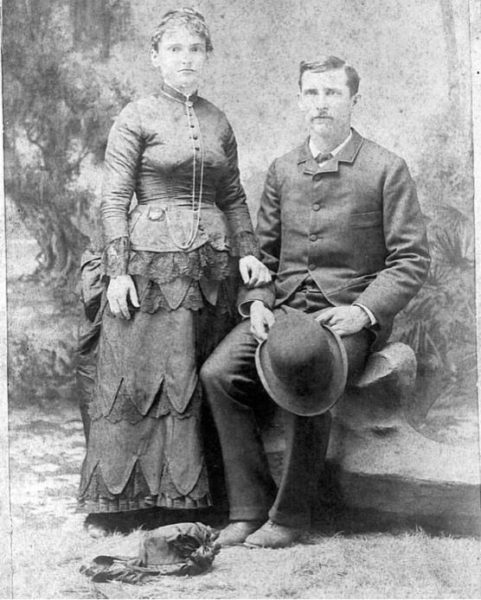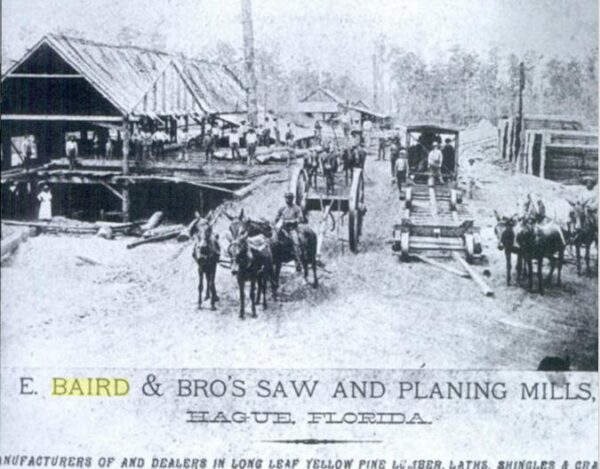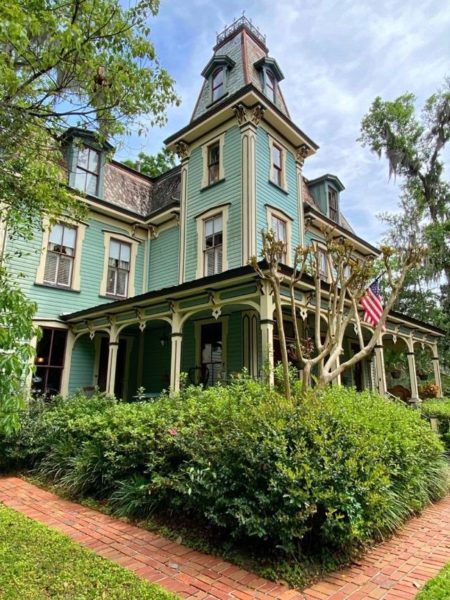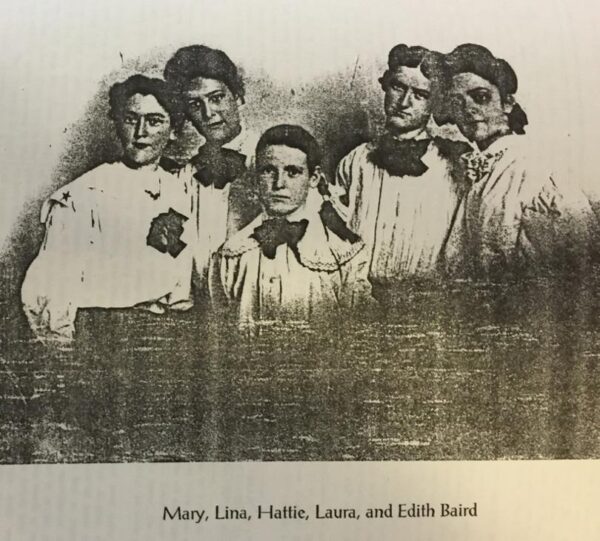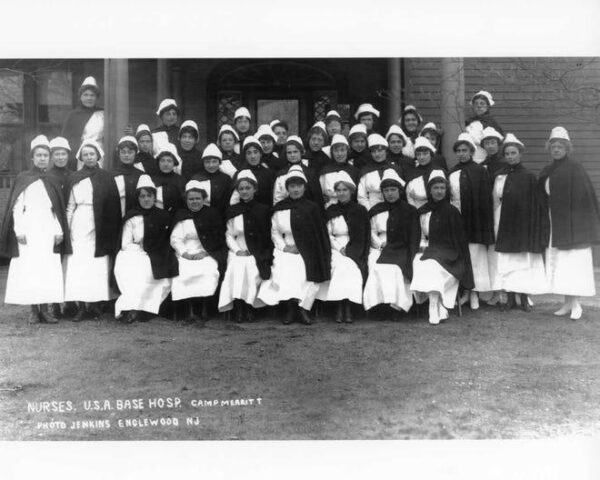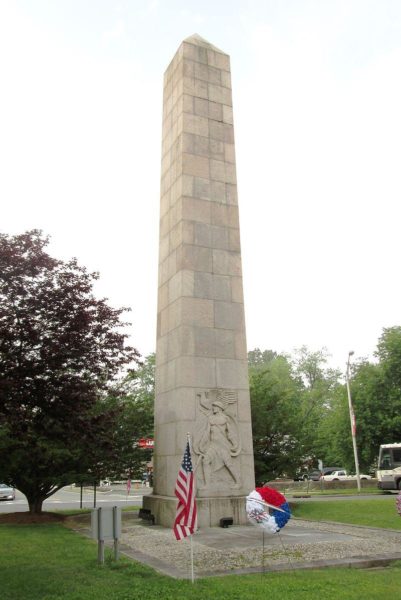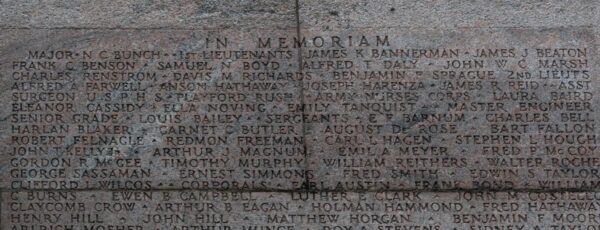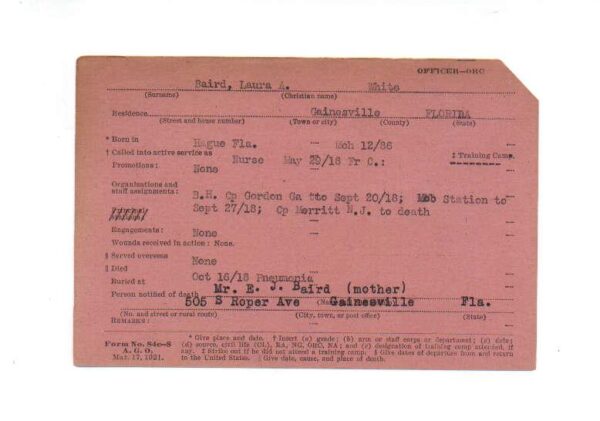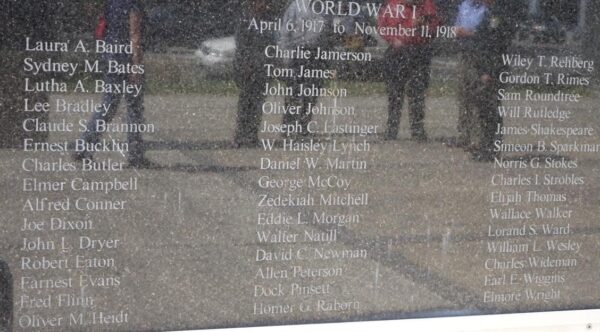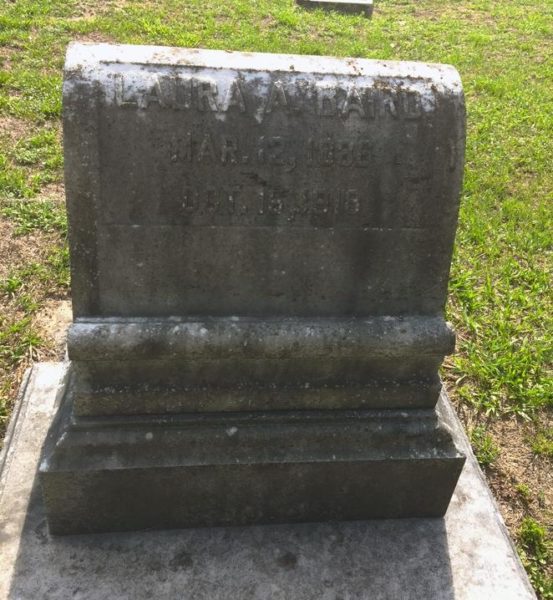Laura Baird was born in Hague, Florida, a small community located between Gainesville and Alachua, on March 12, 1886, to Emmet Joseph Baird (1857-1925) and Mary Ann Eshelman (1860-1948). She had two older brothers, Joseph Irvin (1880-1944) and Calvin Ira (1883-1945), one older sister, Edith (1884-1975), and three younger sisters, Lena (1888-1916), Mary (1891-1966), and Hattie (1894-1977). A younger brother, Emmet J. Baird, Jr., died in 1904 when he was not yet two years old.
Mary Ann and Emmet J. Baird
Originally from Indiana, Emmet and his brother, Eberle, moved to Florida in 1881 to become co-owners of the E. Baird & Bros. Saw and Planing Mill in Hague, which sold and produced longleaf yellow pine lumber, crates, laths and shingles. Eberle later sold his interest in the business to his brother Emmet and moved to Gainesville, where he started Baird Hardware company and the Baird Theater. Emmet, his wife Mary, and their children, followed Eberle to Gainesville and established a vegetable basket and crate factory called the “Standard Crate Company,” located near the Plant Railway depot south of Gainesville. The Standard Crate Company made boxes for shipping fruit and vegetables which were brought to Gainesville for distribution during the city’s heyday. Emmet prospered in Gainesville. His crate company was successful, and he purchased a large home (1900) and a sawmill in Santa Fe (1903).
E. Baird & Bros. Saw and Planing Mill, Hague, Florida.
The home he purchased would later be known as the Baird Mansion, and it was here that Emmet and Mary Ann settled down to raise their large family. The Baird children were all well-educated and attended local schools, including Gainesville High School and East Florida Seminary (pre-University of Florida). The Baird daughters received good secondary school education, which was rare for girls at the time. Lena and Hattie both attended the Florida Female College in Tallahassee. Mary attended the East Florida Seminary and the Curry School of Expression in Boston.
The Baird Mansion (1896), with Mary Ann Baird on the porch.
Today the home is known as the Magnolia Plantation Bed & Breakfast.
The Baird sisters — Mary, Lena, Hattie, Laura, and Edith.
Laura had two great passions, music and nursing. The latter career she pursued first, graduating from the Nurses Training School of St. Luke’s Hospital in Jacksonville, Florida on May 30, 1906. Two years later, she attended and graduated from the New England Conservatory of Music in Boston. From at least 1910 through 1917, she worked as a nurse and lived with her parents and three younger sisters at 505 South Roper Avenue in Gainesville (309 Southeast 7th Street, today). She soon gained the reputation for being “a splendid” nurse, “bright, happy, sympathetic, lovable,” an “ideal person” to help the sick.
On May 29, 1918, Laura became an Army nurse, and she was assigned to the Base Hospital at Camp Gordon, north of Atlanta, Georgia. Here she remained until late September 1918, when she transferred to Camp Merritt, New Jersey.
Established in 1917, Camp Merritt was a busy embarkation camp where over 1 million soldiers passed thru going to and returning from Europe, all in about a 2-year period. With a capacity of 38,000 men, the camp held anywhere between 25,000 and 35,000 troops on any given day. In September 1918, more than 37,000 men passed through, receiving equipment and instruction before embarking from Hoboken.
Nurses, Base Hospital, Camp Merritt, New Jersey.
By the time Laura Baird reported for duty there, pandemic influenza already had arrived. By September 18, 1918, there were 1,500 cases of the H1N1 influenza virus—then dubbed the “Spanish flu.” Within days, the camp’s hospital would be quarantined, the Y.M.C.A. would discontinue activities for troops and weekend visits would be prohibited. In three weeks, the Base Hospital expanded from 1 flu ward to 51 flu and pneumonia wards. Bed capacity rose to 3,800, using barracks as makeshift wards. Surgical wards were evacuated except for the emergency cases, so nearly the entire hospital was filled with influenza patients, according to the Army surgeon general’s report. By November 15, 1918, from the camp’s 5,025 H1N1 cases, 396 soldiers had died. Before the pandemic was over the following Spring, the number of flu deaths had exceeded 500.
Today, there are 579 names listed on the Camp Merritt Monument, located on the borders of Cresskill and Dumont, at the intersection of Madison Avenue and Knickerbocker Road, in Bergen County, New Jersey. These are the people who died at the base hospital during the flu pandemic of 1918-19. The monument was dedicated “in memory of those who gave their lives for their country while on duty in Camp Merritt,” on Memorial Day, May 30, 1924. Over 10,000 attended the dedication ceremony, which included General John J. Pershing, Commander of the American Expeditionary Forces, and the widow of Major General Wesley Merritt, for whom the camp was named.
Camp Merritt Memorial Monument
A smaller replica of the Washington Monument, it is a 66-foot-tall obelisk, constructed of Stony Creek granite. It features a large carved relief sculpted by Robert Ingersoll Aitken, which portrays a World War I doughboy with an eagle above it. Near the monument on a large boulder is a copper plaque designed by Katherine Lamb Tait which has a relief of the Palisades, and in the ground is a dimensional stone carving of a map of Camp Merritt. The list of names begins on the east side, beginning with 15 officers, starting with Major N. C. Bunch. After the officers come the 5 medical personnel who died at the camp, 1 assistant surgeon and 4 nurses, followed by 558 enlisted men and 1 civilian.
And there, first among the nurses, fifth row down, is the name of Laura Baird, who contracted influenza and died of pneumonia at the base hospital where she had been caring for soldiers, at 10 am on October 16, 1918.
Florida Service Card for Laura A. Baird.
“She was a lady of exceptionally fine character,” remarked one eulogizer, “staunch, true, and of the most lovable disposition.” The Ocala Evening Star of October 18, 1918, added that Laura Baird was one of Alachua County’s “most efficient nurses, and a popular young woman.” On November 30, 1925, the Twentieth Century Club of Gainesville, to which Laura had belonged, dedicated a bronze tablet in her memory. Although not included on the Memorial Park Scroll, her name is also the first one listed on the World War I plaque at the Alachua County Courthouse in Gainesville, erected in November 2003.
Grave of Laura A. Baird, Evergreen Cemetery, Gainesville.

